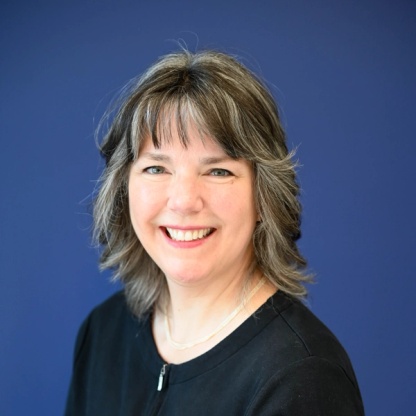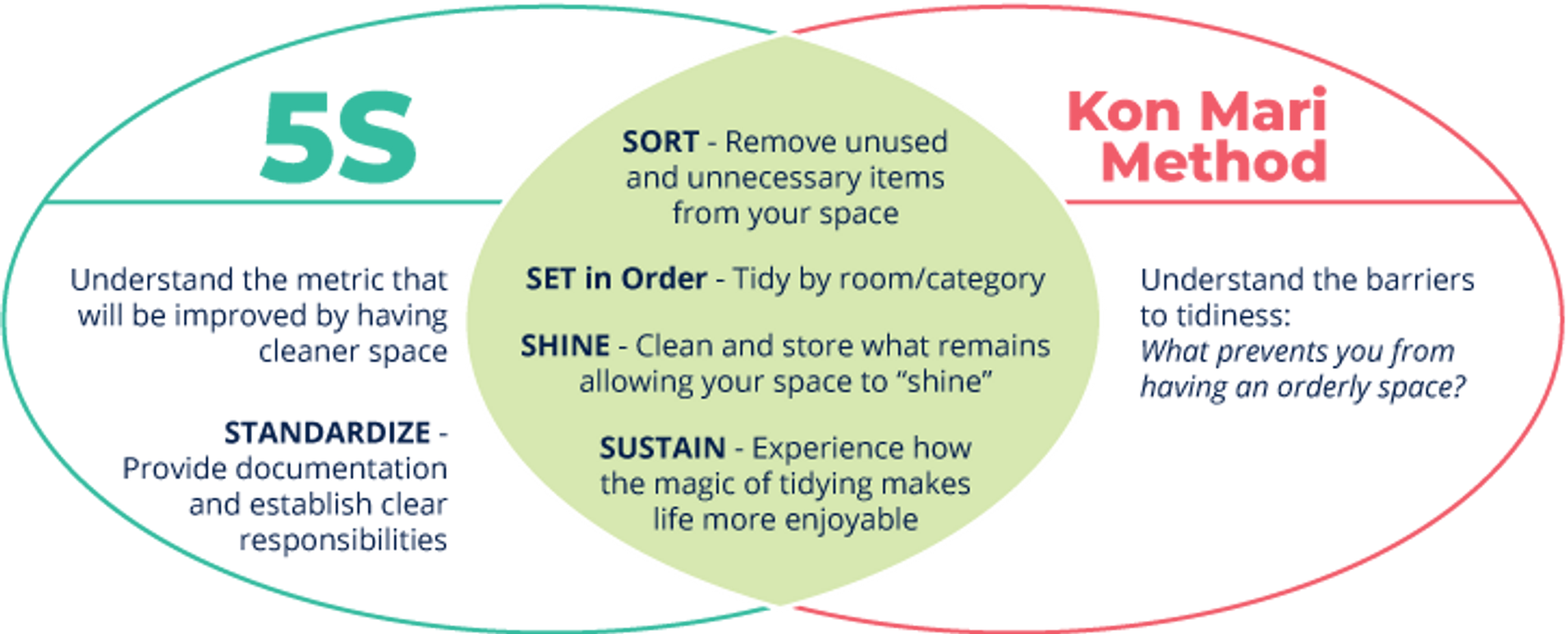
KonMari: 5S Goes Mainstream
July 10, 2019If you’re reading this blog, you are already in the MoreSteam Enterprise Process Improvement orbit. I love it when our CI path intersects with wider mass-culture. It makes it easier to explain to others what we do for a living! Twelve years ago when I joined MoreSteam, I struggled to find mainstream examples so I could explain to my mom what I do. Sometimes, it’s felt like I’ve been cast as Kelso’s dad in the "Career Day" episode of That 70’s Show.
The most recent example I’ve found is The Life-Changing Magic of Tidying Up, a 2014 book by Marie Kondo. Earlier this year, Kondo launched a Netflix reality series based on the book, showing examples of applying her magic to home makeovers. If you’ve somehow missed this trending ideology, the KonMari Method™ outlines a systematic approach to organizing your living space. It’s 5S meets MerryMaids.
Here’s my synopsis: To achieve a life of less stress and more intention, have less stuff. Keep only the things you need and only the things that bring you joy. Be ruthless in separating yourself from things that do not support the way you want to live your life.
Sound familiar?
In the KonMari Method, the determining factor for keeping or tossing an item is to hold it in your hand and ask the question "Does this spark joy?" If not, the item gets tossed or donated. While I don’t recall hearing Lean practitioners talk about "joy," the overlap between the two methods is undeniable. Take a look and see if you agree.
There are a couple points of departure between the guidance provided by Sakichi Toyoda, the father of 5S, and Marie Kondo. A Lean activity focuses your eyes on the current state and cycle time metrics leading to a measurable, improved future state. KonMari never mentions measuring how long it takes you to find your socks, but it does encourage you to understand what has been standing in your way to a better future. Seek to understand. Then the change can happen.
Another point of departure is the 5S Standardize step which is missing in the KonMari Method. Marie Kondo states, "Tidying should be a big event, not a daily activity." That’s antithetical to Lean culture and the practice of a daily lean management system. In the workplace, it’s essential to document expectations and assign responsibility due to the number of employees involved. Maybe it’s just as essential when there are only a couple people involved.
Kondo makes a dangerous assumption—that all who use a tidied space will consistently maintain it in the way it was organized. In our house, when someone says "It’s time to 5S the fridge," we all know what that means. And it doesn’t usually spark joy. Establishing a shared goal with mutual accountability might prevent my fridge from returning to disarray.
The core tenets of 5S and the KonMari map quite closely. That’s not hard to see. After you read the book or watch an episode of "Tidying Up with Marie Kondo," it becomes clear that the models are two stems from the same root. Both methods respect the people who live/work in the environment being examined. In our production areas, meeting rooms, and customer service areas, our employees work best when their environment is clean, safe, and well-lit. We honor our teams and our customers by extension, when there is order. Likewise, our home-life has less stress when our living spaces are tidy. We respect ourselves, spouses and children with a higher standard of visual order. 5S or KonMari? Call it what you will—just tidy up the clutter!

Kathy Miller promotes process improvement tools and techniques and heads up MoreSteam's European sales efforts. Kathy joined MoreSteam in June, 2007, as the Director of Sales. Prior to that, she worked as a program Developer at the American Society for Quality (ASQ) and in training-related roles in companies related to the food-business, including Johnsonville Sausage and Whole Foods Market.
Kathy earned her Lean Six Sigma Green Belt in 2006. She earned her B.A. from University of Wisconsin, Madison and an M.A. in Curriculum and Instruction from University of Wisconsin, Milwaukee.




